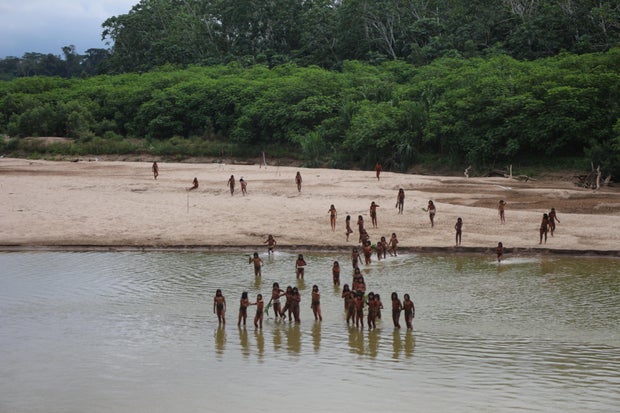From the depths of Brazil’s Amazon to Indonesia’s rainforests, a number of the world’s most remoted peoples are being squeezed by roads, miners and drug traffickers — a disaster unfolding removed from public view or efficient state safety.
A new report by Survival Worldwide, a London-based Indigenous rights group, makes an attempt one of many broadest tallies but, figuring out not less than 196 uncontacted Indigenous teams in 10 international locations, primarily within the South American nations sharing the Amazon rainforest. Launched Sunday, the report estimates that just about 65% face threats from logging, about 40% from mining and round 20% from agribusiness.
“These are what I might name silent genocides – there aren’t any TV crews, no journalists. However they’re occurring, and so they’re occurring now,” stated Fiona Watson, Survival’s analysis and advocacy director, who has labored on Indigenous rights for greater than three many years.
The difficulty usually receives little precedence from governments, which critics say see uncontacted peoples as politically marginal as a result of they do not vote and their territories are sometimes coveted for logging, mining and oil extraction. Public debate can be formed by stereotypes – some romanticize them as “misplaced tribes,” whereas others view them as limitations to improvement.
Survival’s analysis concludes that half of those teams “might be worn out inside 10 years if governments and corporations don’t act.”
Who the uncontacted peoples are
Uncontacted peoples aren’t “misplaced tribes” frozen in time, Watson stated. They’re up to date societies that intentionally keep away from outsiders after generations of violence, slavery and illness.
“They do not want something from us,” Watson stated. “They’re comfortable within the forest. They’ve unbelievable data and so they assist preserve these very priceless forests standing – important to all humanity within the combat in opposition to local weather change.”
Survival’s analysis exhibits that greater than 95% of the world’s uncontacted peoples dwell within the Amazon, with smaller populations in South and Southeast Asia and the Pacific. These communities dwell by looking, fishing and small-scale cultivation, sustaining languages and traditions that predate fashionable nation-states.
Why contact will be lethal
Teams dwelling in voluntary isolation have “minimal to no contact with these exterior of their very own group,” stated Dr. Subhra Bhattacharjee, director basic of the Forest Stewardship Council and an Indigenous rights professional based mostly in Bonn, Germany. “A easy chilly that you simply and I recuperate from in every week … they may die of that chilly.”
Past illness, contact can destroy livelihoods and perception methods. Worldwide legislation requires free, prior and knowledgeable consent – often called FPIC – earlier than any exercise on Indigenous lands.
“However when you’ve teams dwelling in voluntary isolation, who you can’t get near with out risking their lives, you can’t get FPIC,” Bhattacharjee stated. “No FPIC means no consent.”
Her group follows a strict coverage: “No contact, no-go zones,” she stated, arguing that if consent can’t be obtained safely, contact shouldn’t happen in any respect.
The Related Press reported final yr on loggers who were killed by bow and arrow after coming into Mashco Piro territory in Peru’s Amazon, with Indigenous leaders warning that such clashes are inevitable when frontier zones go unpoliced.
Survival Worldwide/Handout by way of REUTERS
Support Greater and Subscribe to view content
This is premium stuff. Subscribe to read the entire article.















